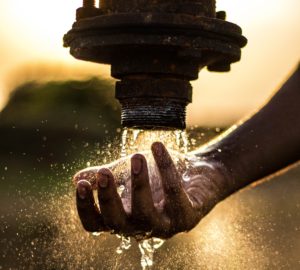
When we talk about Muslim achievements, why is it that we only speak about the past? Do we not have the responsibility to benefit the world as a whole with the teachings of Islam and the practices of our beloved Prophets? Muslims need to stand firm by their beliefs, rethink their practices, and reform the world. With so much to do, it is difficult to know where to start such an aspiring movement. Perhaps this revolution will have to begin in the same manner as with many of our books of Fiqh; with Tahara.
If we take a look at the water usage of the average Muslim versus the average non-Muslim, chances are that the Muslim uses a lot more water. The Muslim is always making Wudhu approximately five times a day, making Ghusl, washing his clothes three times, and using water for Istinjaa. If we look at the water consumption of the average Muslim, one would presume that Islam was established in an area with an abundance of water. A quick look at the litres of water flowing down the drains of our Wudhu Khanas, would leave one to assume that Islam was designed to be practiced along the riverside. However, as we all know, this is simply not the case.
Islam was established in a desert.
Muslims of that time lived a life of purity and cleanliness, without wasting
water. This is because they had a prophet who told them not to waste water,
even if they were by a flowing river. Islam showed the world that one does not
need to be extravagant in order to be pure. It showed us that we have to adopt
purity in our souls, as well as in our external bodies.
However, as the Muslim world
progressed, we started adopting the views and ways of the general populace
around us. Our Ghusls changed into luxurious long showers, while our Wudhus
filled our drains with litres of water. Is it not time for us as Muslims to
turn back to the ways of our beloved Nabi s
and revive his Sunnah? Hence, I pose before you: The Water Challenge.
How the challenge worked: We decided to test a few of our friends with the amount of water they use while making Wudhu. Keep in mind that the Sunnah amount for Wudhu is just over 750ml. We took six of our friends to a Wudhu Khana, and measured the amount of water they used for their Wudhu. Our findings are listed below.
| Water Used | Comparison with Sunnah | |
| Person 1 | 3.4 litres | Four and a half times more than Sunnah |
| Person 2 | 12.6 litres | 16 times more than Sunnah |
| Person 3 | 2.6 litres | Three and a half times more than sunnah |
| Person 4 | 10.5 liters | 14 times more than Sunnnah |
| Person 5 | 11 liters | 14 and a half more than Sunnah |
| Person 6 | 7.8 liters | 10 times more than Sunnah |
Try This Out: If you are really interested in finding out how much water you use for your Wudhu, try this out. It is really not as complicated as it may seem. All you really need is a bucket, and a measuring cup or something to measure your water with. This may just be the first step in comprehending the importance of conserving water.
The Water Challenge: The real challenge here is to conserve the amount of water we use. To make Wudhu within the limit of 750ml is not difficult at all. Try it out, buy a 1 litre bottle of any soft drink and fill it to an estimated amount of 750ml, and simply make Wudhu with it. I implore you to try it out. Better yet, I challenge you. So will you accept the challenge?
Sheikh Abdullah Ayaz Mullanee is a scholar from the Greater Toronto Area. He is passionately involved in several initiatives around Toronto and is regularly invited to speak at youth and community based events. Shaykh Abdullah currently teaches at Khairul Ummah Academy and Mathabah Institute while conducting online classes for Lubab Academy’s Arabic Language program. He is also the editor in chief for ‘Bridging The Gap’, the official magazine for the Canadian Council of Muslim Theologians.

